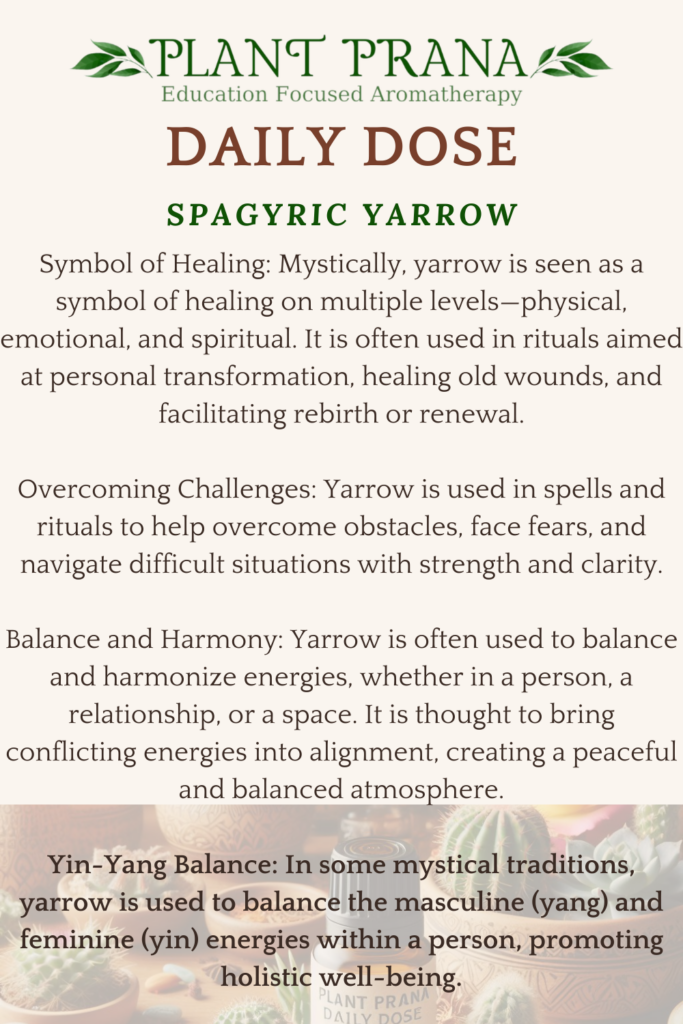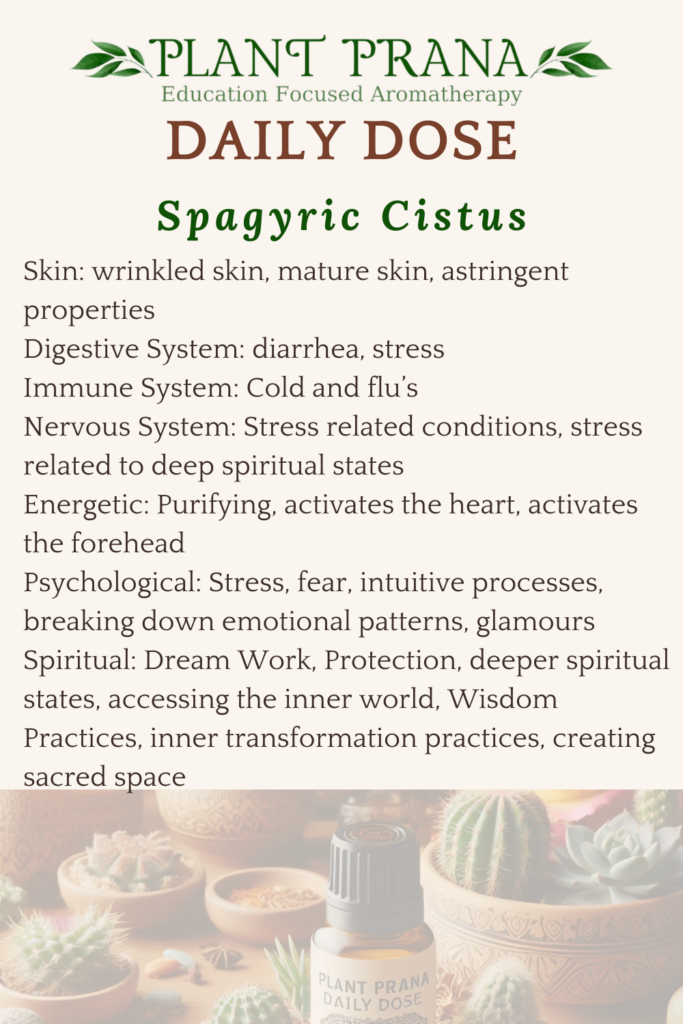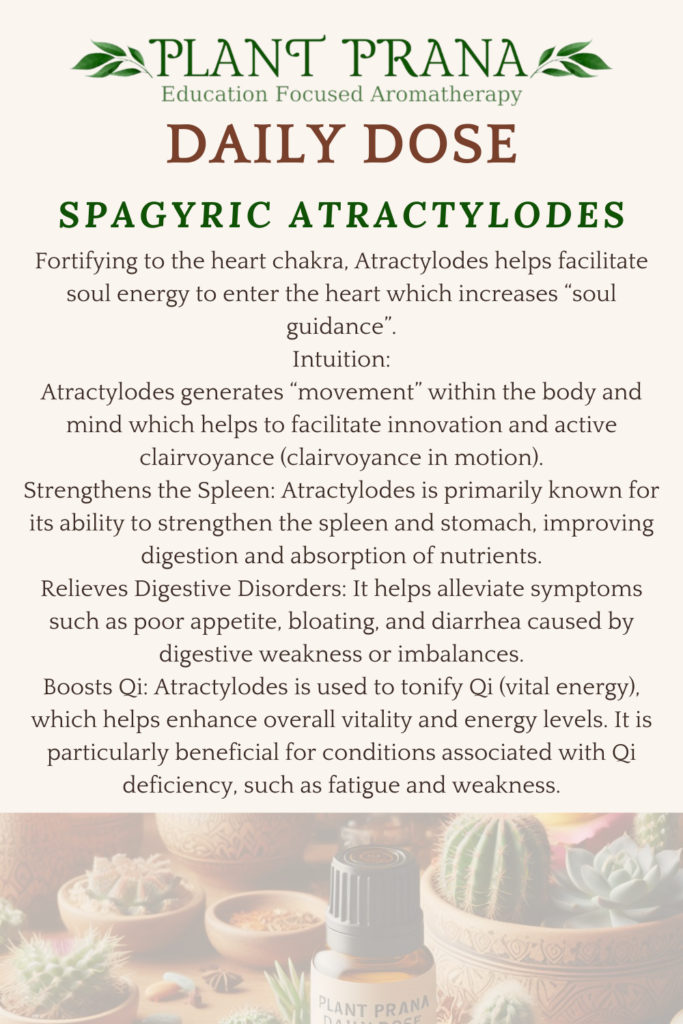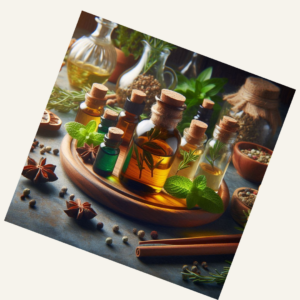Spagyric Cistus Tincture:
Ingredients: Cistus Tincture, Cistus Essential Oil, Labdanum, Cistus Absolute, Cistus Hydrosol, Holy Water, Ash of Cistus
Cistus, also known as rockrose, is a genus of flowering plants that are used in traditional and folk medicine, particularly in the Mediterranean region. The most commonly used species for medicinal purposes is Cistus ladanifer, also known as ladaniferous rockrose. This plant produces a resin known as labdanum, which is highly valued for its therapeutic properties.
Mystically and energetically it is used for dream work, deepening one’s intuitive abilities, and breaking down negative emotional patterns. Spagyric Cistus Tincture directly impacts the aspect of the aura associated with intuition and healing the past.
Emotions and feelings: Cistus gently breaks down emotional patterns caused by negative conditioning and allows for deeper activation of the heart center.
Incense: Cistus, especially labdanum resin, is commonly burned as incense for purification and protection rituals. The aromatic smoke is believed to cleanse spaces of negative energy and create a protective barrier against harmful influences.
Ritual Baths: Adding Cistus to ritual baths can cleanse the aura and remove negative attachments. It is often used before important rituals or ceremonies to prepare and purify the practitioner. The scent of Cistus essential oil or resin is used to deepen meditation, enhance spiritual awareness, and promote a sense of inner peace. It is thought to help open the mind to higher spiritual realms and facilitate communication with the divine.
Chakra Healing: Cistus is associated with balancing and healing the heart chakra (Anahata), promoting emotional clarity and healing. It can also be used to stimulate the third eye chakra (forehead chakra) for increased intuition and psychic abilities.
Anointing: Cistus oil is used to anoint the body, particularly the feet, to ground and center oneself. This practice is beneficial during times of stress, anxiety, or when feeling disconnected from the physical world.
Amulets and Talismans: Cistus leaves or resin can be carried in a pouch or used to create amulets and talismans for grounding, stability, and protection.
Divination: Cistus is used in divinatory practices to enhance psychic abilities, clarity, and insight. It is often burned as incense during tarot readings, scrying, or other forms of divination to open the practitioner’s psychic senses. The use of Cistus deepens the intuition in all who embrace it’s aroma.
Dream Work: The scent of Cistus can be used to promote vivid and meaningful dreams. It is sometimes used in dream pillows or inhaled before sleep to enhance dream recall and facilitate lucid dreaming.
Attracting Love : Cistus is sometimes used in rituals to attract love, enhance sensuality, and deepen emotional connections. The resin’s warm, musky scent is associated with love, attraction, and passion.
Energy Healing: In energy healing practices, Cistus is used to cleanse and heal the energetic body. It is believed to aid in emotional healing and release trauma or emotional blockages.
Rebirth and Transformation: The plant’s association with renewal and transformation makes it a powerful aid in rituals focused on personal growth, spiritual rebirth, and letting go of past traumas.
Elemental Associations: Cistus is often associated with the element of Earth, linking it to stability, grounding, and the material aspects of life.
Planetary Correspondences: It is sometimes associated with the Sun, representing vitality, clarity, and illumination.
Creating a Sacred Space: Burn Cistus incense or diffuse the essential oil in spaces designated for meditation, prayer, or ritual work to create a sacred and protected environment.
Intent Setting: As with any mystical practice, using Cistus involves setting clear intentions. Whether for protection, healing, or enhancing spiritual abilities, focusing your intent can amplify the effects.
Antibacterial: Cistus has been found to have antibacterial properties, making it useful in treating bacterial infections, particularly of the skin and respiratory tract.
Antiviral: Cistus extracts, particularly from Cistus incanus, have demonstrated antiviral activity, including potential effects against influenza viruses and other pathogens.
Antifungal: The plant is used to combat fungal infections due to its antifungal properties.
Anti-inflammatory and Antioxidant Effects:
Cistus contains polyphenols and flavonoids, which have potent anti-inflammatory and antioxidant effects. These compounds help reduce inflammation and protect the body from oxidative stress, which is linked to various chronic diseases.
Immune System Support:
The plant is known for its immune-boosting properties. Cistus tea or extracts can help strengthen the immune system and improve the body’s resistance to infections.
Respiratory System: Cistus is used to treat respiratory issues such as colds, coughs, bronchitis, and sinus infections. Its expectorant properties help clear mucus from the respiratory tract, while its antimicrobial properties help fight off pathogens.
Skin Health:
The resin (labdanum) from Cistus is used in skincare for its astringent and antiseptic properties. It can help in treating wounds, skin infections, acne, and other skin conditions. It is also used to tone and tighten the skin, reducing the appearance of wrinkles and blemishes.
Gastrointestinal Health:
Cistus is sometimes used to soothe gastrointestinal issues, such as diarrhea and indigestion, due to its mild astringent properties.
Oral Health:
Due to its antibacterial properties, Cistus is used in mouthwashes and toothpastes to help maintain oral hygiene, reduce plaque, and treat gum diseases.
Use a dropper full 1-2x a day when needed
1oz Tincture
4oz Body Tonic
Spagyeryor spagyric medicine, is a branch of alchemical tradition that focuses on the preparation of remedies and substances using alchemical processes. The word “spagyric” comes from the Greek terms “spao” (to draw out) and “ageiro” (to gather), reflecting the method’s core principles of separation, purification, and recombination. Here’s an overview of its definition, aspects, and mechanics:
Definition
Spagyery involves the extraction of quintessences from plants and minerals through alchemical distillation and fermentation techniques. This practice aims to harness the spiritual and healing properties of substances by separating and recombining their essential components.
Aspects
Philosophical and Spiritual: Spagyery is deeply rooted in Hermetic philosophy, which posits that everything in the universe is interconnected and that true knowledge comes through the synthesis of spiritual and material insights.
Healing: It is considered a form of holistic medicine, intended not just to treat physical ailments but to align the body, spirit, and soul, fostering overall well-being.
Transformation: A key aspect is the transformation of raw materials into purified substances, which is seen as a parallel to personal and spiritual refinement.
Mechanics
Separation: The first step in spagyric processing involves separating the plant or mineral into its three basic principles—salt (body), sulfur (soul), and mercury (spirit). This is typically achieved through processes like fermentation, distillation, and extraction.
Purification: Each component is then purified to rid it of impurities and enhance its inherent qualities. This step is crucial for concentrating the therapeutic aspects of the substance.
Recombination: Finally, the purified components are recombined in a specific way to produce a spagyric essence. This essence is believed to be more potent than the sum of its parts due to the energetic and spiritual enhancements gained through the alchemical process.
Alchemical Explanation of body, soul, and spirit
Body (Salt): In alchemy, the body represents the physical form of a substance. It is associated with the element of salt, which symbolizes solidity, stability, and permanence. The body contains the material or tangible essence of a substance, which can be manipulated or transformed through alchemical processes.
Soul (Sulfur): The soul is associated with sulfur and represents the life force or the individual essence that animates the body. It is often considered the seat of emotions and individual personality in alchemical terms. Sulfur in alchemy symbolizes combustibility and volatility, qualities that are metaphorically linked to the dynamic and ephemeral aspects of the soul.
Spirit (Mercury): Spirit, linked to mercury (also known as quicksilver), represents the mind and the divine spark within. It is the mediator between the soul and the body, acting as a bridge that connects the high (spiritual) and low (material) realms. Mercury in alchemy is characterized by fluidity and changeability, embodying the transformative and transmutative power inherent in all substances.



